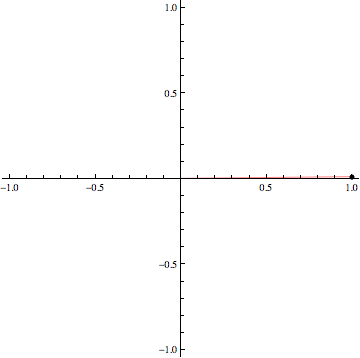After translating an inscribed cylinder in a sphere homework problem
into the language of mathematics, we started talking about nonuniform
density and linking it to integration.
At a fundamental level, integration is adding up infinitely many
infinitesimal contributions to a total. In your first look at integration
(in first year calculus), you probably focused on one main application,
namely computing area under a curve. You can think about this as
computing the area for a "rectangle with variable height". You might also
have used integration to accumulate a total of some quantity from a
variable rate of accumulation (a rate of change). In this course, we will
use a third context as our primary application: using integration to
compute a total amount of stuff from a density for that stuff.
Your first introduction to density (a long time ago) likely came as
something like "density is mass divided by volume". Turning this around,
we can say "mass is density times volume". Getting a total mass from a
density by multiplication works for situations with uniform density. For
nonuniform density, we will get a total from a density using integration.
In addition to generalizing to nonuniform density, Our use of density
will be more general than your initial view in two other ways:
- other dimensions: length, area, or volume
- other quantities: mass, number, charge, cost, probability,...
To denote a length density, we will typically use \(\lambda\) (the
Greek letter "lambda"). For area density, we will generally use
\(\sigma\) (the Greek letter "sigma"). For the more familiar volume
density, we will use either \(\rho\) (the Greek letter "rho") or
\(\delta\) (the Greek letter "delta"). If the stuff (mass, number,
charge,...) is spread out uniformly (that is, the density is constant),
then we can get the total amount of stuff by multiplication. If the stuff
is not spread out uniformly, we need integration to compute the total
amount of stuff. In class, we looked at doing this with stuff spread out
on a line segment. This handout on nonuniform density has related
examples and problems.
Here is a Greek alphabet handout
with information about how those letters are used in mathematics.
